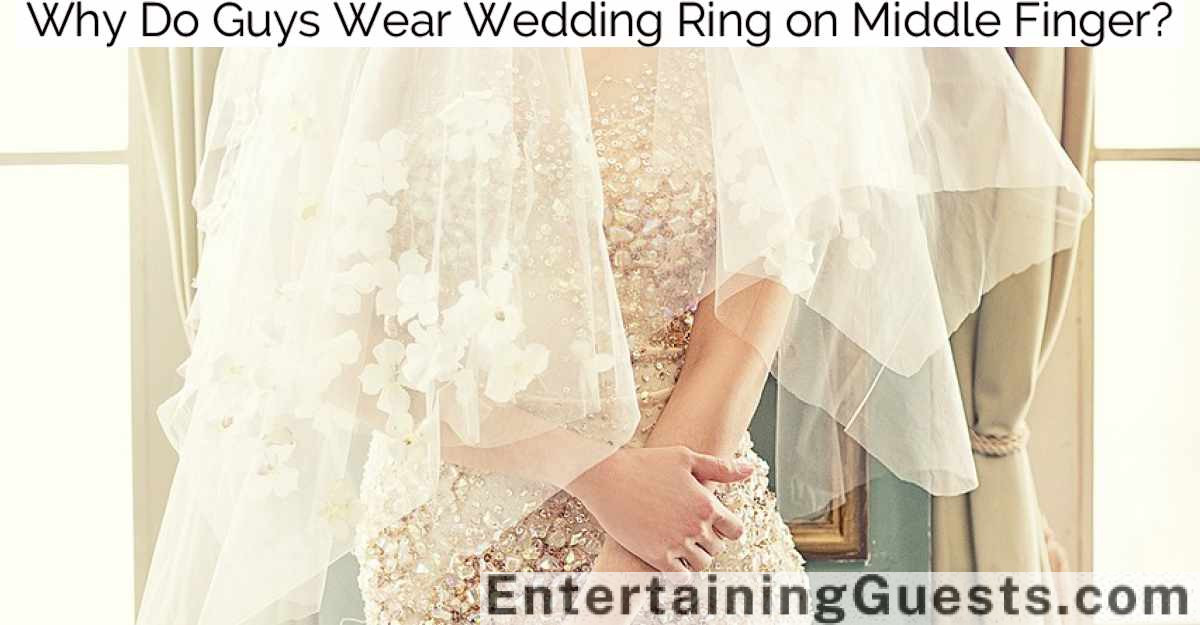You wear your wedding ring on your ring finger because of a tradition rooted in ancient beliefs. Historically, the Egyptians believed this finger housed a vein, the ‘Vena Amoris,’ which was thought to run directly to the heart, symbolizing a strong emotional and loving bond. Although modern science has debunked this anatomical connection, the symbolism remains potent and continues to influence the custom of placing the ring on this particular finger to signify eternal love and commitment. This practice, adopted and popularized by Romans, carries a rich narrative that underscores the deep-seated human desire to connect and commit. Exploring this further unwraps many layers of cultural and personal significance behind this age-old tradition.
Key Takeaways
- The ring finger is traditionally believed to house the ‘Vena Amoris,’ a vein thought to connect directly to the heart.
- Ancient Egyptians initiated the practice, symbolizing the ring finger’s connection to eternal love and fidelity.
- Cultural traditions, influenced by historical beliefs, designate the ring finger as a symbol of marital commitment and love.
- Wearing the wedding ring on the ring finger represents a public pledge and personal commitment to a life-long partnership.
- Despite modern knowledge disproving the ‘Vena Amoris,’ the symbolism retains its emotional and romantic significance in wedding traditions.
Historical Origins of the Tradition
Tracing back to ancient Egypt, people believed that the ring finger contained a vein directly connected to the heart, symbolizing love and commitment. This vein, often referred to in historical texts, was thought to be a direct channel to the heart, therefore making it the ideal place for a wedding ring. This placement was intended to keep the symbol of love close to the life-giving organ, reinforcing the eternal bond between married couples.
As you explore deeper into the history, you’ll find that this tradition was adopted by the Romans who embraced many Egyptian customs. They not only continued the practice but also enriched it with their interpretations and lore, which intertwined love, fidelity, and the sanctity of marriage. The ring, crafted from precious materials, was seen as a public pledge of marriage and an agreement between families, not just the couple.
This tradition has transcended centuries and cultures, evolving in its symbolism but retaining its original placement on the ring finger. Today, you wear your wedding ring on this finger as a continuation of a deeply rooted historical practice, a legacy of ancient beliefs about love’s connection to the very essence of life.
The "Vena Amoris" Myth Explained
While the tradition of wearing wedding rings on the ring finger is steeped in history, the belief in the ‘Vena Amoris’—a vein purported to run directly from this finger to the heart—is more myth than reality. This romantic notion traces back to ancient Egypt and was popularized during the Renaissance when anatomists like Galen claimed that a special vein connected the fourth finger to the heart.
However, modern medical science debunks this myth, showing that all fingers have a similar vein structure with no single vein directly linked to the heart.
Despite the anatomical inaccuracies, the symbolism associated with the ‘Vena Amoris’ has deeply influenced wedding ring traditions. You might find it fascinating that such a myth could shape cultural practices so profoundly, yet it’s a demonstration of the power of storytelling in human culture.
As you consider this, it’s important to recognize that while the story isn’t scientifically accurate, it underscores the human desire to connect love with a physical symbol that resonates emotionally.
Understanding the real versus the mythical aspects of such traditions helps appreciate their symbolic value while grounding your expectations in reality. This distinction is vital as you navigate the meanings behind your own or others’ wedding traditions.
Cultural Variations in Ring Placement
Wedding ring traditions vary globally, with different cultures assigning unique significance and placement to this symbol of union.
In the United States and many Western countries, you typically wear your wedding ring on the left hand’s fourth finger. However, in many Eastern European countries like Russia, Germany, and India, the wedding ring graces the right hand.
You’ll find intriguing exceptions when you look closer at specific traditions. For instance, in Jewish ceremonies, the wedding ring is initially placed on the right index finger during the ceremony, symbolizing its prominence and clarity in the vows exchanged. After the ceremony, it’s often moved to the more commonly worn ring finger of the right hand.
In some cultures, the placement of the wedding ring can also change over time. In Brazil, it’s customary to wear the engagement ring on the right hand and then switch the band to the left hand during the wedding ceremony to signify the shift from engagement to marriage.
Understanding these cultural nuances not only enriches your appreciation of global traditions but also highlights the diverse ways love and commitment are symbolized across the world.
As you explore these varied customs, you’ll gain a deeper insight into the significance of this enduring symbol.
Symbolic Meanings of the Ring Finger
The ring finger holds profound symbolic significance across various cultures, representing eternal love, loyalty, and the heart’s connection. This tradition stems from ancient beliefs that a vein, called the "Vena Amoris," runs directly from the ring finger to the heart, symbolizing a direct connection to the soul. While modern science has discredited this anatomical connection, the symbolism persists strongly in matrimonial customs.
You’ll find that in many cultures, the ring finger is not merely a preference but a deeply ingrained symbol. Below is a table showcasing how different societies interpret the significance of the ring finger:
| Culture | Symbolic Meaning |
|---|---|
| Western | Direct heart connection, eternal love |
| Eastern | Harmony, balance in life |
| Ancient Egyptian | Gateway to the heart, eternal cycle of life |
These meanings contribute to why the ring finger is chosen for the commitment that a wedding ring represents. It’s not just about wearing a ring; it’s about what the ring embodies. Each time you glance at your ring, you’re reminded of the commitments and the deep-rooted cultural beliefs that it stands for. This tradition enriches the act of marriage, making the simple gesture of wearing a ring on this specific finger a profound expression of lifelong commitment and love.
Modern Interpretations and Practices
Today’s couples often embrace both traditional and modern interpretations when deciding how to wear their wedding rings. You might find yourself influenced by the classic symbolism of the ring finger, stemming from the belief that it contains a vein directly connected to the heart. Yet, modern practices offer a rejuvenating twist on these age-old traditions.
For instance, some choose to wear their wedding ring on their right hand, reflecting cultural differences or personal preferences. This switch might represent an alignment with certain Eastern European or South American customs, where this practice is more common. Others might opt for unique materials like silicone or tungsten, straying from the traditional gold and silver, to suit active lifestyles or personal tastes.
Moreover, the rise of tattooed rings has gained traction among those who prioritize permanence and practicality. These tattoos symbolize a commitment that can’t be removed or misplaced, appealing especially to those who work with their hands.
As you navigate these choices, consider what resonates most with your values and lifestyle. The flexibility in modern ring-wearing practices underscores that the commitment you’re signifying is deeply personal and tailored to your unique relationship.
Frequently Asked Questions
Can I Wear My Wedding Ring on a Different Finger?
Yes, you can wear your wedding ring on a different finger if you prefer. It’s a personal choice and does not affect the symbolic meaning of the commitment you’re making.
How Do Same-Sex Couples Decide on Ring Placement?
You and your partner can choose ring placement based on personal preference or symbolism meaningful to your relationship. There’s no strict rule, allowing freedom to decide what feels right for both of you.
Is It Bad Luck to Wear a Ring on Your Ring Finger if Unmarried?
No, it’s not bad luck to wear a ring on your ring finger if you’re unmarried. This is a common misconception, but there’s no factual basis to support this belief.
What Metals Are Best for Wedding Rings?
For wedding rings, you’ll find gold, platinum, and palladium are top choices due to their durability and aesthetic appeal. Each metal offers unique benefits, catering to different preferences and lifestyles.
Are There Health Risks Associated With Wearing Rings?
There are minimal health risks associated with wearing rings unless you’re allergic to specific metals, like nickel. Make certain your ring fits properly to avoid circulation problems or skin irritation.
Conclusion
Throughout history, the tradition of wearing your wedding ring on the ring finger has been richly woven with symbolism and belief.
From the romantic notion of the ‘vena amoris’ connecting directly to the heart, to diverse cultural practices globally, this custom transcends mere decoration.
It embodies a profound expression of commitment and love.
In modern times, while interpretations may vary, the essence remains unchanged: the ring finger symbolizes a deep, enduring bond, universally recognized as the mark of matrimony.




